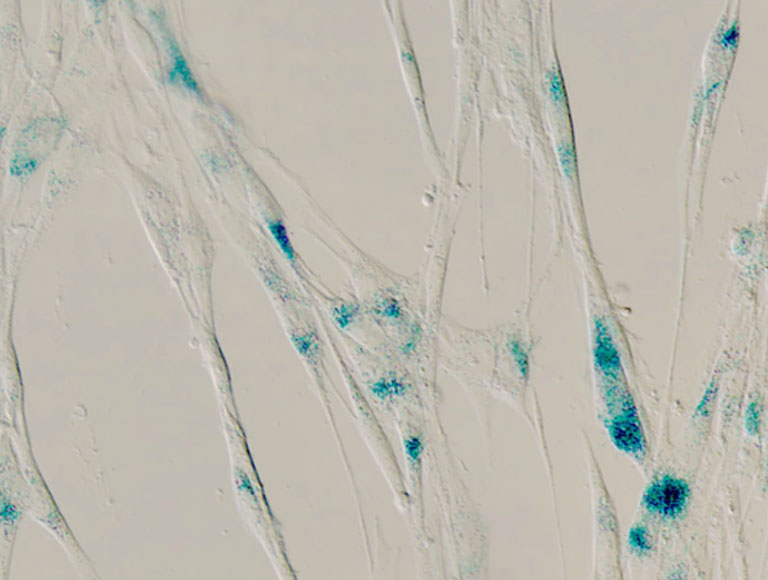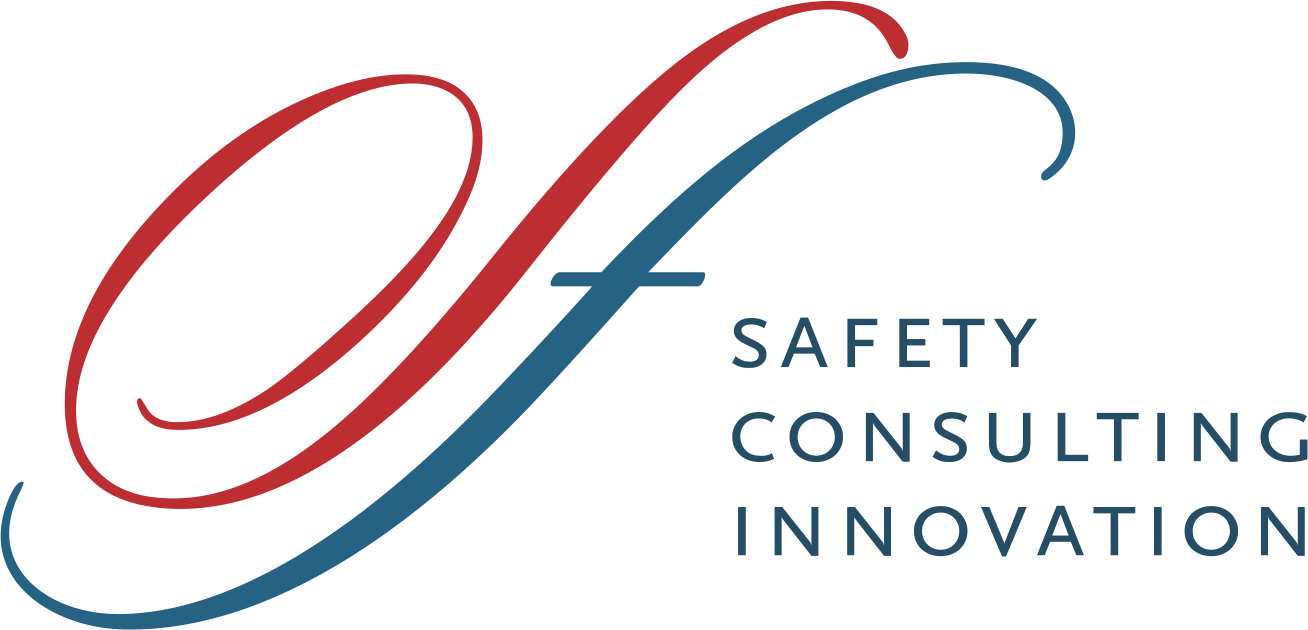|
Getting your Trinity Audio player ready...
|

Senescent cells under the microscope, with the blue regions indicating an increase in the production of the CD36 gene.
Darleny Lizardo/Alan Siegel/University at Buffalo North Campus Confocal Imaging Facility.
https://newatlas.com/cell-senescence-gene-found/55195/
Aging, as a phenomenon in the lifespan of organisms, has intrigued humanity since time immemorial. Why and how is it that, having reached vigorous adulthood, all functions must undergo decay? The duration of this phase, called aging or senescence, varies according to the species.
The lifespan of a multicellular organism can be divided into three phases: development (growth), reproductive period (adulthood) and senescence (aging). The developmental phase includes an increase in the number and size of cells, their differentiation to perform specialized functions, and the formation of organs. At the molecular level, several genes that play specific roles at specific times have been identified for the developmental phase.
Several new proteins appear during this period, indicating the expression of previously inactive genes. Protein levels change as cells differentiate and organs form, indicating changes in the expression of corresponding genes.
Concomitantly, organ sizes increase, which results in an increase in the size of the organism and its functional capacity. These changes confer reproductive capacity on the organism at a specific time when a certain stage of growth has been reached. Growth, however, generally continues even after reproductive capacity is reached.
Cellular health is controlled at multiple points in cells, starting in the nucleus through chromosomal structure/organization, transcriptional regulation, and nuclear export/import, ranging from protein translation and quality control, autophagic recycling of organelles, maintenance of cytoskeletal structure and finally maintenance of the extracellular matrix and extracellular signaling. Each regulatory system receives information from every other system, resulting in a complex regulatory interplay that controls cell aging.
In senescence, which is a characteristic of all multicellular organisms, the functional abilities of all organs and the organism decrease.
No special structure or function appears; on the contrary, those who are already present undergo changes. To date, no new genes have been shown to be expressed or repressed, which could be responsible for aging. However, several genes that are already active have been shown to undergo changes in their expression.
Aging can be defined as the progressive functional decline in tissue function that ultimately results in mortality. This functional decline may result from the loss or diminished function of postmitotic cells or the failure to replace them with a functional decline in the ability of the (stem) cells to sustain replication and cell divisions.
The aging process, or senescence, is driven at the cellular level by random molecular damage that slowly accumulates with age. Although cells have mechanisms to repair or remove damage, they are not 100% efficient and their efficiency decreases with age.
There are many molecular mechanisms involved and exogenous factors such as stress, tobacco smoke, exposure to UV radiation and environmental pollutants also contribute to the aging process.
Individual molecular mechanisms cannot explain aging in isolation, as each mechanism has many interactions.
Other contributing factors include genetics, epigenetics, diet, physical activity, extranuclear mitochondrial DNA point mutations, oxidative stress, increased frequency of chromosomal abnormalities, single-gene mutations, protein damage, dysregulation of cell signaling, mitochondrial dysfunction, DNA damage and repair, telomere shortening, and inflammation (called inflammation).
Article developed by Adrian Hand, Chemical Technician and Bachelor in Chemistry from Oswaldo Cruz University. Chemist at the Butantan Institute.
